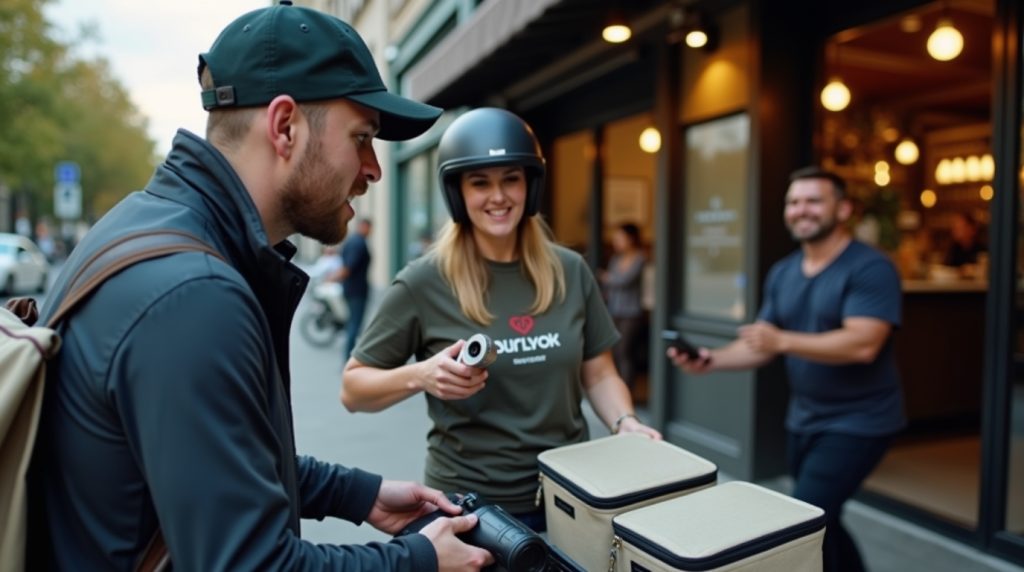Ensuring the safety and reliability of healthcare staff is critical for any medical facility. Whether you're a business owner, HR professional, recruiter, or job-seeker in the healthcare industry, understanding the nuances of healthcare worker screening is fundamental. This guide will walk you through the essential considerations and best practices for effective healthcare worker screening.
Key Takeaways
- Rigorous healthcare worker screening is vital for ensuring patient safety and maintaining public trust.
- Comprehensive screening processes include criminal background checks, license verification, and health records assessments.
- Adherence to legal standards like those from the Joint Commission is crucial to avoid legal and financial repercussions.
- Implementing continuous monitoring and updates to screenings ensures ongoing compliance and risk mitigation.
- Leveraging technology and specialized screening agencies can enhance the efficiency and accuracy of the screening process.
Introduction
Imagine a world where healthcare workers are not thoroughly screened before they start treating patients. Scary, right? Rigorous screening is a cornerstone of patient safety and trust in medical institutions. Healthcare worker screening isn’t just about weeding out the bad apples; it’s about upholding the highest standards of care and safeguarding public health.
Screening in the healthcare industry involves a comprehensive evaluation of potential employees, encompassing background checks, drug testing, and verification of licenses and certifications. With these measures in place, we can ensure that only the most competent and trustworthy individuals make the grade. This meticulous process is paramount, given the high stakes involved—people's lives and well-being.
In this article, we'll dive deep into all aspects of healthcare worker screening. From cracking down on criminal records to keeping health and immunization records up to date, we'll explore the ins and outs of creating a foolproof screening process that both employers and employees can rely on. Whether you’re an HR professional, a healthcare recruiter, or a job-seeker, this guide aims to provide you with essential insights into an effective screening framework.
Importance of Healthcare Worker Screening
Healthcare worker screening isn't just a box-ticking exercise—it's pivotal for maintaining patient safety and overall operational effectiveness. Here's why it's non-negotiable:
Patient Safety
When it comes to healthcare, there's zero room for error. Comprehensive screening helps ensure that medical personnel are capable and trustworthy, mitigating risks like incompetence and criminal behavior that could endanger patients. Properly vetted healthcare workers contribute to a safe environment where patients can receive the care they need without unintended harm. Need a deep dive? The Department of Labor outlines further on this.
Legal Compliance
In the healthcare industry, adhering to regulations isn't optional. Laws and standards from entities like the Joint Commission mandate rigorous screening processes. These aren't just bureaucratic hurdles—they're designed to protect patients and ensure high standards of care. Compliance helps avoid hefty fines and legal issues that could arise from subpar screening practices.
Protecting the Organization
Scrutinizing healthcare workers before they join your organization can save you from a cascade of problems. From preventing malpractice suits to safeguarding against reputational damage and financial loss, rigorous screening is your frontline defense. Think of it as an investment in quality and reliability. Fewer legal disputes, better patient outcomes, and a sterling reputation are among the dividends.
In summary, healthcare worker screening is an essential, strategic process. It's not just about compliance, it's about creating a secure, effective, and trustworthy healthcare environment for both patients and staff.
Types of Healthcare Worker Screening
Criminal Background Checks
In the healthcare sector, a clean criminal record is often non-negotiable. Performing criminal background checks is crucial to ensure that potential hires do not have histories that could jeopardize patient safety or the organization’s reputation. Employers should consult guidelines from the Federal Trade Commission to ensure compliance with legal standards and fair hiring practices.
License and Certification Verification
No healthcare worker should step foot in a medical facility without verified credentials. Confirming that all licenses and certifications are current and valid is essential. This ensures that the healthcare professionals are meeting required competency standards, reducing the risk of malpractice and ensuring patient trust in the care provided.
Employment and Education Verification
Thoroughly checking previous employment and educational backgrounds can help verify the legitimacy of a healthcare worker's qualifications. This step can unearth inconsistencies or embellishments in a candidate’s resume, ensuring that only the most qualified individuals make it through. Given the stakes involved, this isn't an area where shortcuts are advisable.
Drug Testing
Healthcare facilities must maintain a safe and reliable workforce, and drug testing is a standard part of that mission. Drug tests help ensure that healthcare workers are not under the influence of substances that could impair their judgment or performance, thereby safeguarding both patients and the staff from potential hazards.
Health and Immunization Records
A healthcare worker’s health status is equally critical. Ensuring that all healthcare workers are immunized and physically capable of performing their duties is not just about keeping them healthy; it's about protecting patients from communicable diseases. This verification process helps maintain a safe environment where everyone—from the administrators to the patients—can feel secure.
Steps in the Healthcare Worker Screening Process
Define Job Requirements
Start with a clear job description. Articulate the specific qualifications, skills, and attributes necessary for the role. The more detailed you are, the easier it will be to screen candidates effectively. This sets the foundation for every subsequent step in the screening process.
Initial Application Screening
Begin with a preliminary review of resumes and applications. Look for red flags like employment gaps or inconsistencies in job history. This initial filtering helps narrow down a large pool of candidates to those who are most likely to meet the job's specific requirements.
Interviews
Structured interviews are crucial. Develop a set of standardized questions designed to gauge not only the technical skills but also the soft skills and cultural fit of each candidate. This step provides a more comprehensive understanding of the applicant's suitability for the healthcare environment.
Comprehensive Screening
This is the core of the process. Conduct criminal background checks, verify licenses and certifications, confirm previous employment and educational credentials, perform drug tests, and review health and immunization records. Each of these steps adds another layer of assurance that the candidate is fit for the role and poses no risk to patient safety.
Continual Monitoring
The screening process shouldn’t end once the candidate is hired. Implement ongoing monitoring to maintain compliance with health and safety regulations. Regularly update background checks and health screenings to ensure that your staff continues to meet the stringent standards necessary for reliable patient care.
Best Practices for Effective Healthcare Worker Screening
When it comes to screening healthcare workers, cutting corners is not an option. Adopting a meticulous, yet streamlined approach can weave safety and reliability into the very fabric of your healthcare operations. Here are some key practices to shape your screening process into a robust shield for both patients and the organization.
Standardized Procedures
First and foremost, establish standardized screening procedures. Uniformity is crucial; it ensures every candidate is evaluated by the same metrics, promoting fairness and consistency. Create a detailed checklist that includes all necessary checks and balances such as background checks, license verification, and drug testing. This ensures that no critical step is overlooked and that every potential hire meets essential criteria.
Use of Technology
Incorporate advanced technology to enhance efficiency and accuracy. Automated systems can streamline various parts of the screening process, from initial application sorting to real-time verification of credentials. Many software solutions provide dashboard overviews, tracking the progress of multiple candidates simultaneously, and flagging any issues that require deeper assessment. Leveraging technology not only accelerates the hiring timeline but also minimizes human error.
Training HR Staff
Well-trained HR staff are the backbone of an effective screening process. Invest in regular training sessions focused on the best screening practices, industry-specific regulations, and emerging trends. Familiarity with legalities, such as non-discrimination laws and privacy concerns, ensures compliance and upholds the integrity of the process. An informed HR team can adeptly navigate complexities and make judicious decisions.
Collaborate with External Agencies
Consider partnerships with specialized screening agencies to enhance thoroughness and accuracy. These external agencies bring expertise and a third-party perspective that can uncover details internal teams might miss. Collaboration with these agencies often means access to a wider array of databases and more sophisticated tools, bolstering the comprehensiveness of your screening efforts.
By embedding these practices into your hiring framework, you not only elevate the safety and credibility of your healthcare facility but also cultivate a workforce that truly aligns with your organizational values.
Legal and Ethical Considerations
Privacy Concerns
When conducting healthcare worker screenings, maintaining the privacy and confidentiality of candidates' personal information is paramount. Medical institutions must handle data with the utmost care, ensuring compliance with privacy laws such as HIPAA (Health Insurance Portability and Accountability Act). This includes secure storage and limited access to sensitive data, underscoring the organization's commitment to ethical and responsible practices.
Non-Discrimination
Adherence to non-discrimination laws, like the Equal Employment Opportunity Commission (EEOC) guidelines, is crucial. Screenings must be void of biases related to race, gender, age, or any other protected characteristic. Ensuring fairness in the process not only aligns with legal mandates but also promotes a diverse and inclusive workplace.
Informed Consent
Obtaining informed consent from candidates is a non-negotiable step in the healthcare worker screening process. Before any background checks or medical screenings are conducted, candidates must be fully briefed on what the process entails and provide their explicit permission. This practice not only builds trust but also aligns with legal requirements, reinforcing the ethical standards of the hiring institution.
Frequently Asked Questions (FAQs)
How long does the screening process typically take?
The duration of the healthcare worker screening process varies based on several factors, including the level of detail required and the efficiency of the processes in place. Typically, it can take anywhere from a few days to a couple of weeks. It’s important to strike a balance between thoroughness and timeliness.
What happens if a candidate fails a drug test or background check?
Failing a drug test or background check can disqualify a candidate from being hired. However, the specifics can vary depending on the organization’s policies and the nature of the issue. Employers should have clear protocols in place and ensure candidates are informed of potential consequences from the start.
How often should healthcare worker screenings be updated?
Regular updates to screenings are crucial for maintaining ongoing compliance and safety. Best practices suggest reevaluating healthcare workers’ screenings annually or biannually. Additionally, more frequent checks may be warranted for high-risk positions or those with direct patient care responsibilities.
Are there differences in screening for permanent vs. temporary healthcare staff?
Yes, there are usually differences in the screening processes for permanent versus temporary healthcare staff. Permanent staff typically undergo more comprehensive, in-depth screenings, while temporary staff may have a more streamlined process focused on critical elements such as licensing and immediate past employment.
What are common red flags to watch out for in the screening process?
Common red flags include discrepancies in employment history, missing or outdated certifications, criminal records relevant to the job responsibilities, failed drug tests, and incomplete or unverifiable educational backgrounds. Identifying these red flags early can save time and resources down the line.
Conclusion
Screening healthcare workers is critical for creating a safe, compliant, and effective healthcare environment. Employers must prioritize comprehensive and consistent screening processes to protect patient safety and maintain the integrity of their institutions. By staying vigilant and incorporating ongoing assessments, healthcare facilities can ensure continuous compliance and mitigate potential risks.
Remember, thorough screening not only safeguards your organization against malpractice and reputational damage but also significantly enhances the quality of patient care. For more on this topic, check out resources from the Department of Labor and the Federal Trade Commission.
Still have questions?
Get in touch with our team today for a personalized demo and discover how our tailored volume pricing and packages can drive results for your business!
How useful was this page?*
Note: your comments are anonymous. We use them to improve the website. Do not include any personal details.
Visit our FCRA Compliance Tool or leave a message here if you need a response.
From the blog Explore the GCheck Content Hub

FACIS Background Check: 2026 Healthcare Compliance Guide
18 Dec, 2025 • 20 min read
Food Delivery Driver Background Check: Complete Compliance Guide for Restaurant Operators
17 Dec, 2025 • 17 min read
Texas Education Background Checks: 2026 TEA Compliance Guide for Schools & Districts
17 Dec, 2025 • 23 min readThe information provided in this article is for general informational and educational purposes only and should not be construed as legal advice or a substitute for consultation with qualified legal counsel. While we strive to ensure accuracy, employment screening laws and regulations—including but not limited to the Fair Credit Reporting Act (FCRA), Equal Employment Opportunity Commission (EEOC) guidelines, state and local ban-the-box laws, industry-specific requirements, and other applicable federal, state, and local statutes—are subject to frequent changes, varying interpretations, and jurisdiction-specific applications that may affect their implementation in your organization. Employers and screening decision-makers are solely responsible for ensuring their background check policies, procedures, and practices comply with all applicable laws and regulations relevant to their specific industry, location, and circumstances. We strongly recommend consulting with qualified employment law attorneys and compliance professionals before making hiring, tenant screening, or other decisions based on background check information.

